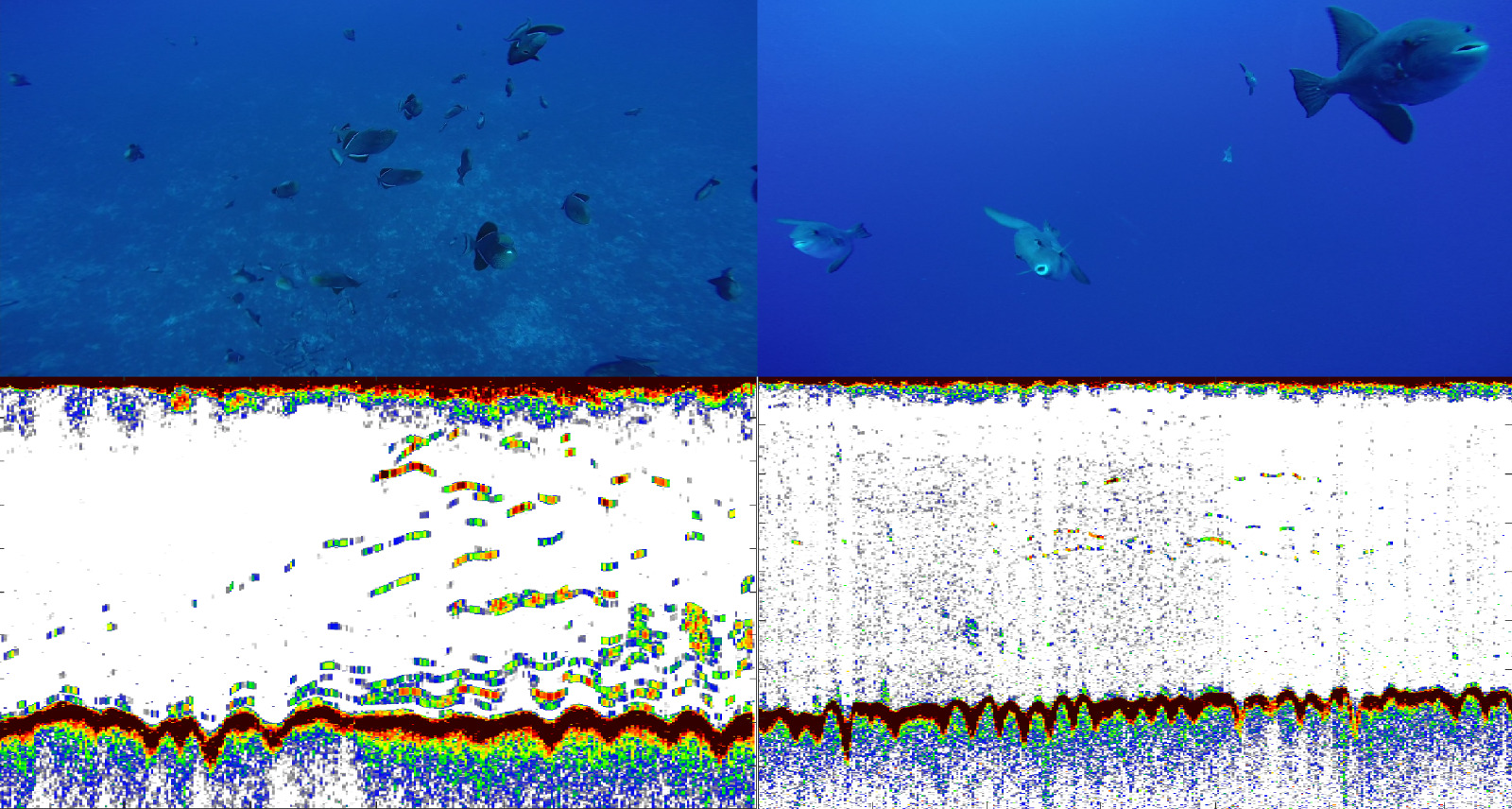
Triggerfish are widely distributed in tropical waters where they play an important ecological role. The black triggerfish Melichthys niger may be the dominant species around oceanic tropical islands, whereas pelagic triggerfish, such as the ocean triggerfish Canthidermis sufflamen, can assemble around fish aggregating devices (FADs) where they are a common bycatch of tuna fisheries. In this study we combined acoustic and optical recordings to provide the first in situ target strength (TS) measurement of black and ocean triggerfish. Data were collected in the Archipelago of Fernando de Noronha off north-east Brazil. The mean TS of a 27.8-cm-long black triggerfish at 70 and 200 kHz was –39.3 dB re 1 m2 (CV = 14.0%) and –38.9 dB re 1 m2 (CV = 14.4%) respectively. The mean TS values of ocean triggerfish (with a size range of 39–44 cm) at 70 and 200 kHz were –36.0 dB re 1 m2 (CV = 15.7%) and –33.3 dB re 1 m2 (CV = 14.0%) respectively. This work opens up the field for acoustic biomass estimates. In addition, we have shown that TS values for ocean triggerfish are within the same range as those of small tunas. Therefore, acoustic data transmitted from FADs equipped with echosounders can introduce a bias in tuna acoustic biomass estimation and lead to increased rates of bycatch.
If you cannot access the pdf please contact: mailjulie
Additional Keywords
biomass estimation, north-east Brazil, small tuna, target strength–length relationships, tropical ecosystem, underwater acoustics, underwater video.
Reference
Julie Salvetat A,B,F, Anne Lebourges-DhaussyC, Paulo TravassosB, Sven GastauerD, Gildas RoudautC, Gary VargasA,B and Arnaud BertrandA,B,E






